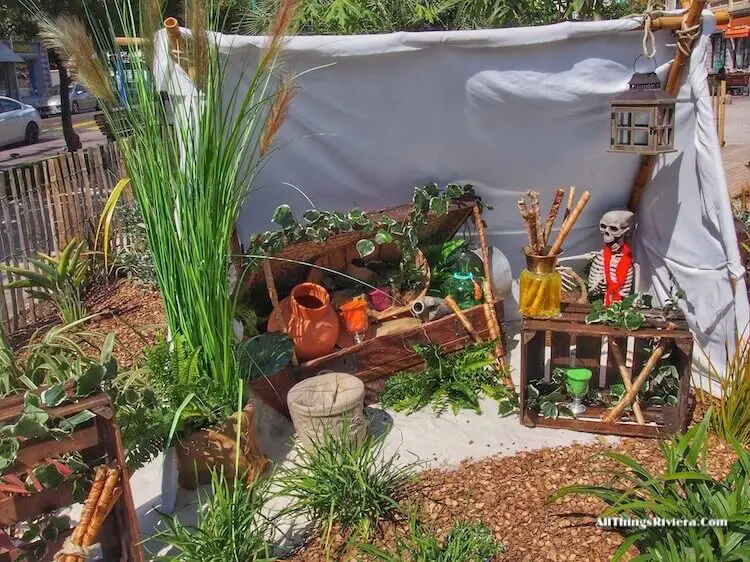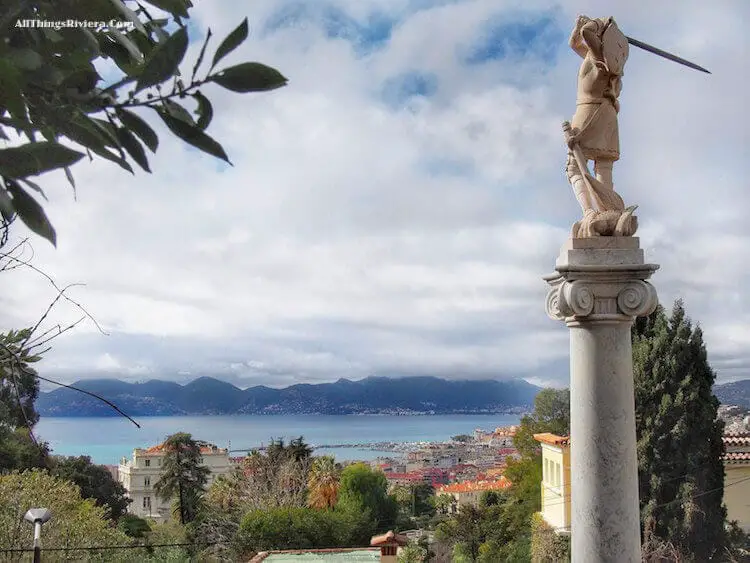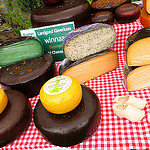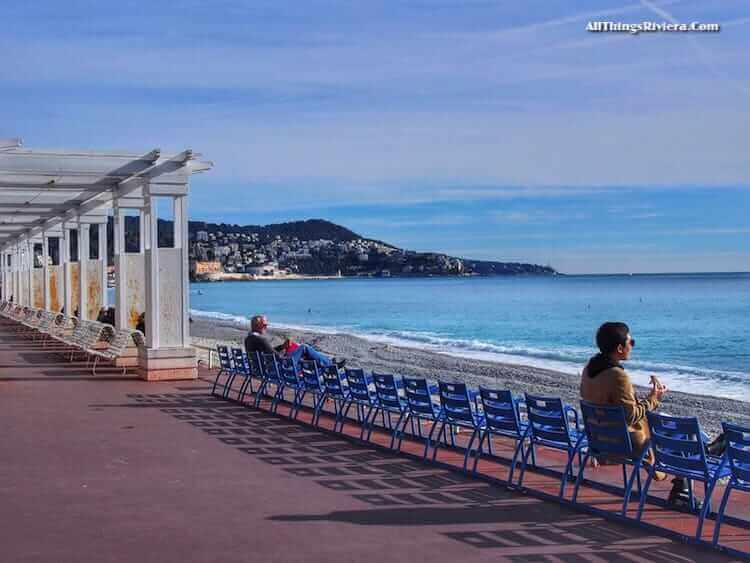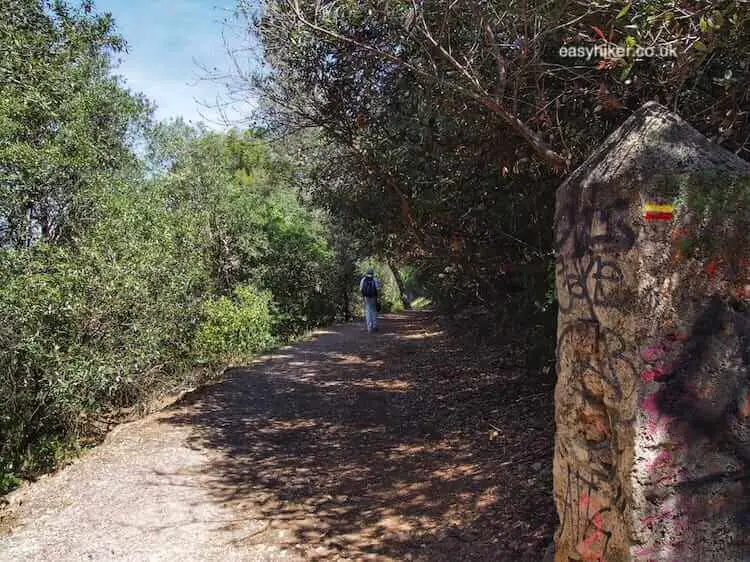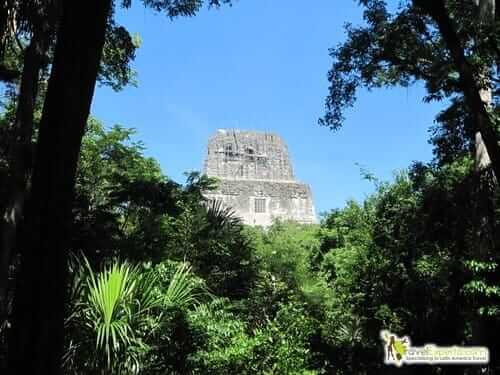The Santuario di Oropa aka Sacred Mountain of Oropa, in the northern Italian region of Piemonte is one of the largest sacred shrines in the Alps – and also one of the most storied.
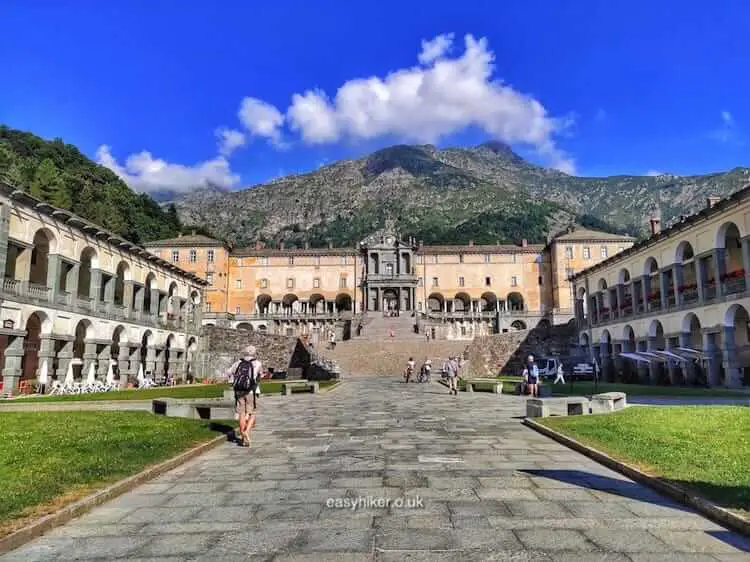
It all started with St Eusebius in the 4th century: on a pilgrimage to the Holy Land, as the legend has it, the bishop acquired the statue of a black-skinned Virgin Mary and brought it back to his diocese of Vercelli.
Fleeing from pagan riots into an Alpine hermitage, he buried the statue under a sacred rock, and when his men – after things had calmed down – tried to retrieve it, the Madonna had miraculously gained so much weight that it proved impossible to carry her away. With incontrovertible medieval logic, it was concluded that the Black Madonna preferred to stay where she was, and so they proceeded to build a chapel around her.
The reality, alas, is more prosaic: the Madonna was in all probability the work of a medieval craftsman and painted black because the Celtic goddess she was meant to replace in the people’s affections had also been black.
And the place for the original chapel – where a successor chapel still stands today – …

… was chosen because this was a site of pagan rites, full of phallic-shaped bounders that had inspired a Celtic fertility cult.
Soon after that, the Black Madonna found ways of thanking the locals for their devotion. A series of miracles occurred – not one but two men whose tongues had been cut out started to speak audibly again after praying in front of the statue – and she proved to be a dab hand in medical emergencies, too, sparing the neighbouring town of Biella from a deadly 17th century epidemic.
At its peak, the shrine was visited by dozens of organized mass pilgrimages every year – like the one conducted by the citizens of Fontainemore who still come here every five years for a starlight pilgrimage across two mountain ranges, leaving their home town in the Aosta Valley late in the afternoon to enter the gates of Oropa at dawn the following day.
Visitor numbers at Oropa still grew as late as the 19th century, demanding new additions to the site’s infrastructure and the construction of ever grander buildings.
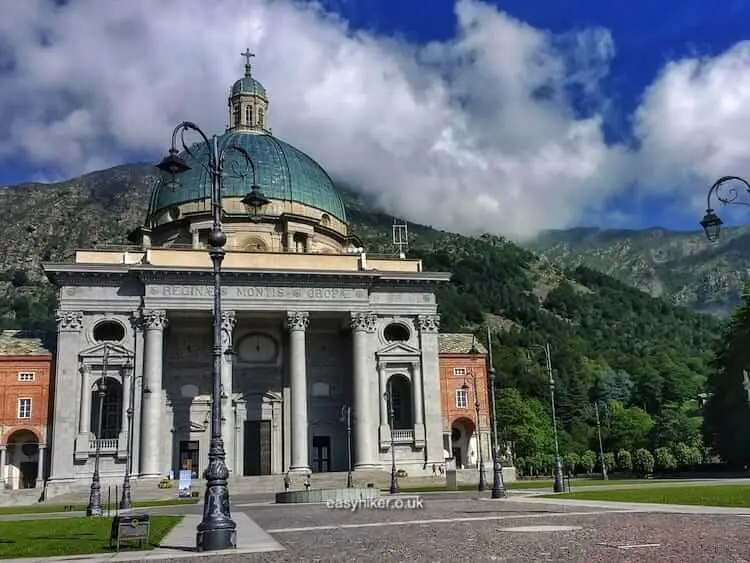
The sanctuary still attracts almost one million visitors every year, although the days when believers in the power of prayer arrived here en masse after walking for days or even weeks through Alpine wildernesses are surely over.
Few people today arrive in need of medical care or even just a sip of water …
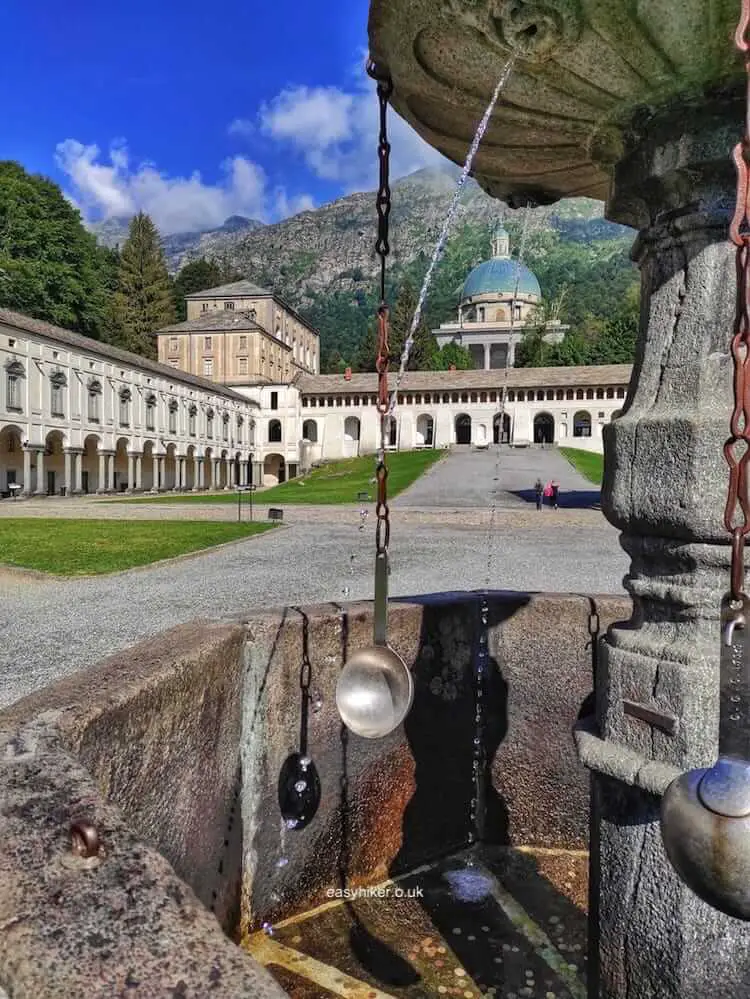
… and many visitors, I suspect, may have journeyed to the area mainly to see one of the many near-by attractions and, once in the area, were just curious to find out what all the fuss is about.
A little like us, in fact, although we had not come for the Botanic Gardens or the Oropa Adventure Park and were primarily interested in a much earlier addition to the peripheral attractions of the Santuario -the Sacro Monte di Oropa.
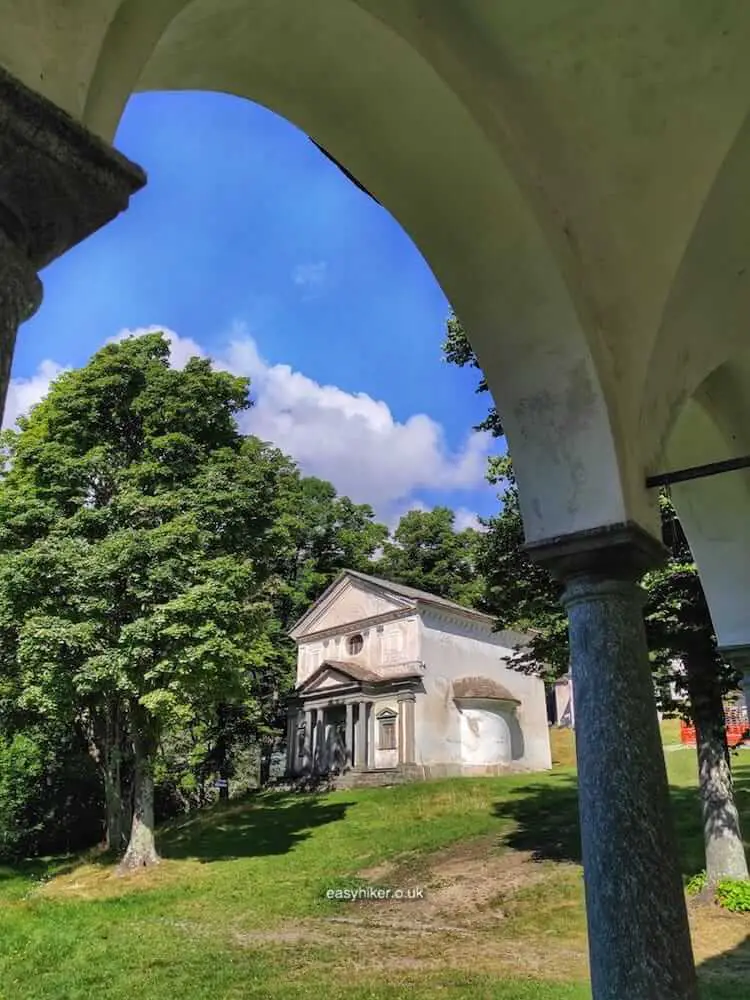
The Sacred Mountain of Oropa is one of nine such religious theme parks in Northern Italy where, in the 16th and 17th centuries, architecture, scenic views and sculptural recreations of stories from the Bible were combined in an attempt to recreate the experience of a “proper” pilgrimage to the Holy Land. Such trips had become nearly impossible to undertake at the time, due to the changing political climate in the Middle East.
The Sacro Monte of Oropa consists of twelve chapels whose polychrome terracotta statues retell, as you might expect, episodes from the life of the Virgin Mary. Many of the works were added during the last flowering of the Sacri Monti style in the years around 1700.
There is the occasional moment of meditative calm in an austere environment …
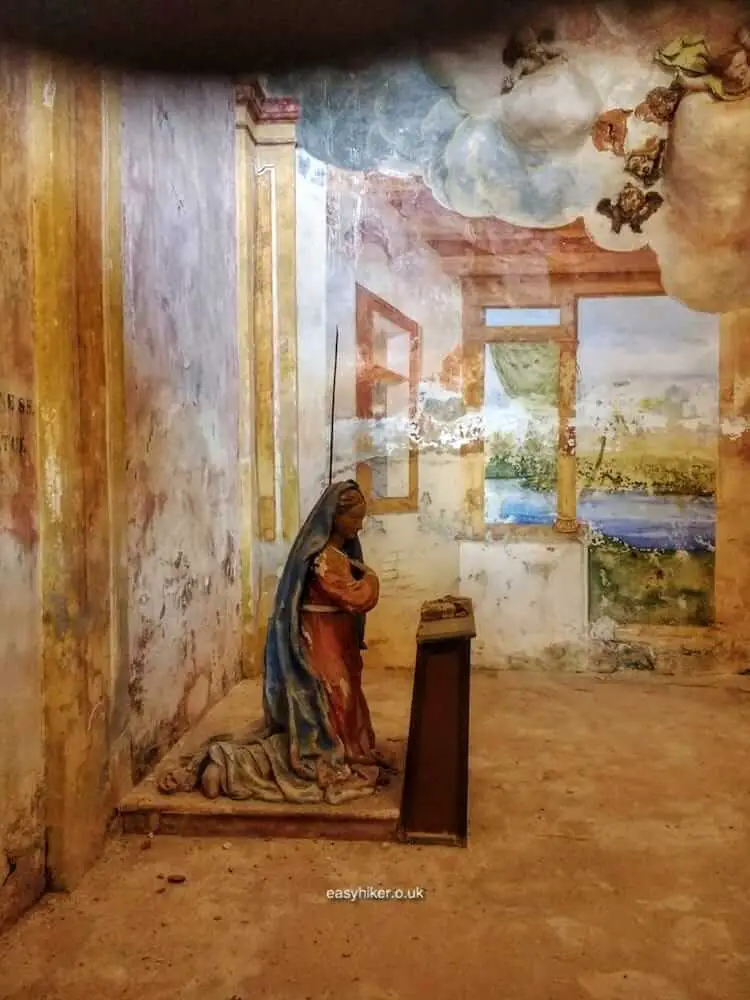
… but more often than not, the scenes are rather busy, constantly pulling the eye from one detail to the next.
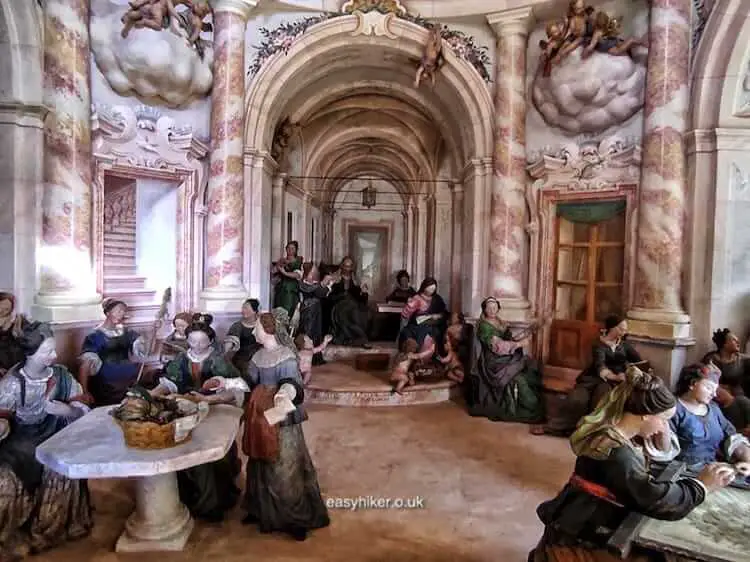
If, that is, the eye can discern any such detail at all. Most of the time, you will be staring at black contours against a grey wall, because it is so dark inside the chapels.
Only if you squeeze the lens of your camera through the gaps in the fly-wire (or bird-wire) …

… and take a lot of photos will you be able to appreciate the intensity of the religious theatre inside the chapels and the interplay of the colours.
Adequate illumination of the chapels’ interior is, of course, a problem for all the Sacri Monti, but at Oropa, I feel, this problem has been aggravated by the layout of the site.
Obviously, more sunlight can be directed into a sequence of chapels that winds around an open hilltop than into one that occupies a lower slope. But what could the architects at Oropa do? When they were commissioned to design its Sacred Mountain, the mountain itself was already occupied.
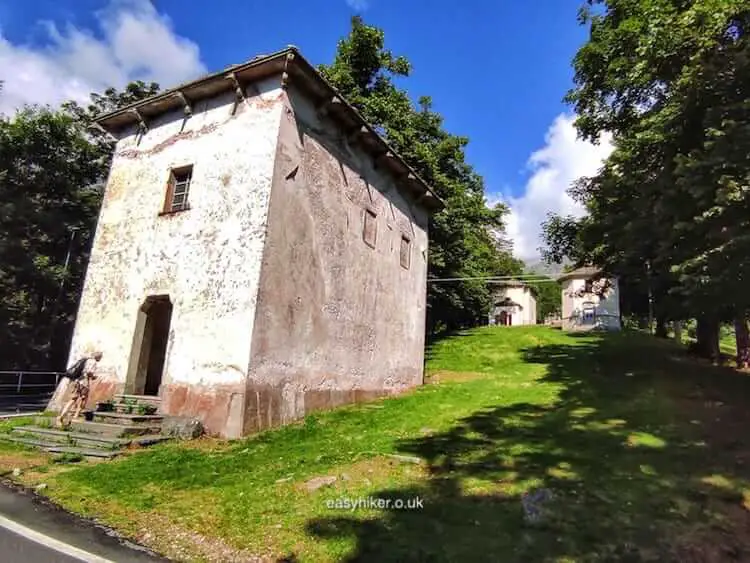
The decision to line up all the chapels along a straight and narrow uphill path also means that the Oropa experience does not come with much of a walk: there is no rambling through proto-Alpine landscapes, no element of surprise when the next chapel comes suddenly into view in a forest clearing, and there are no twists and turns in the trail that allow you to enjoy a variety of views across the valleys below. The Sacro Monte di Oropa only offers a “mono-view” – which is pretty and pleasant but not as spectacular as those at Orta or Varese.
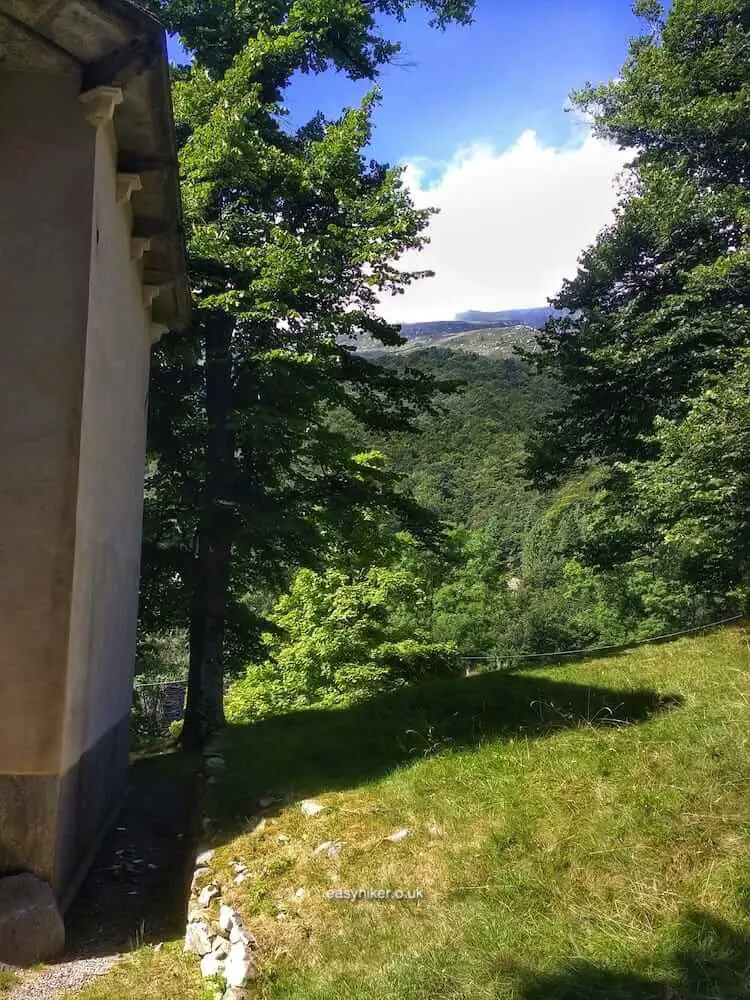
Reaching the cemetery and realizing that the chapel at the top of the slope – the biggest we had seen so far – was closed and under construction, we were ready to call it a day and turn around.
But on closer inspection, this was only Chapel Number 11 out of 12 in the programme. So we had another look at the sitemap, stepped boldly into the undergrowth – and persevered down a non-existing foot path, past deadwood and fallen trees, until we saw something gleaming through the tree tops.
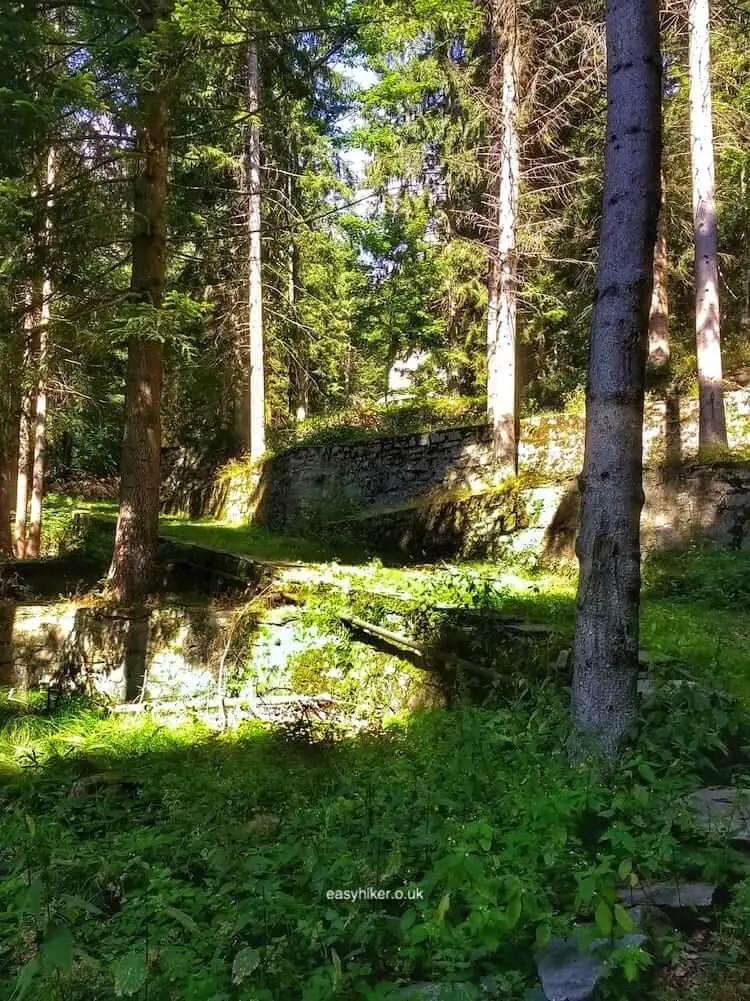
And there it was, at the end of a path that made you wonder how much time had passed since the last group of visitors had ploughed its way through the Oropa thicket: Chapel Number 12, The Heavenly Crowning Of Mary, aka The Nearest Thing You Can Find In Italy To A Temple In The Amazon Forest.
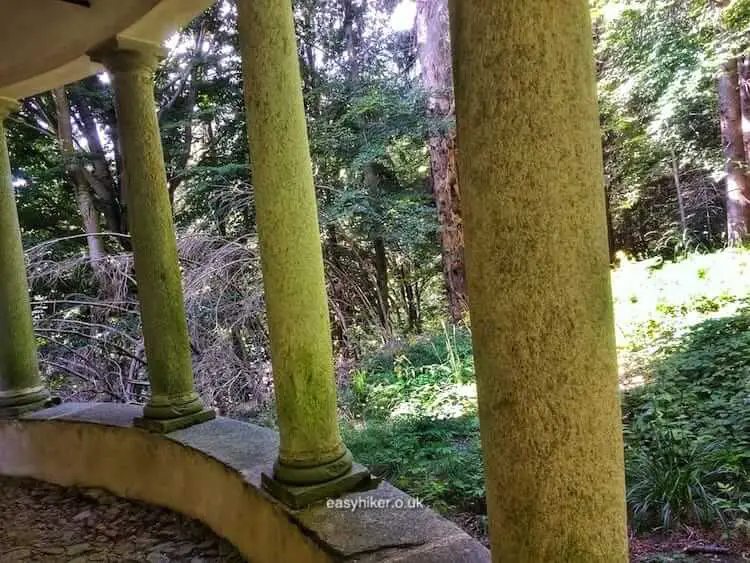
It will make you want to reach for your bullwhip – and shout: “This belongs in a museum!” And indeed, it does.
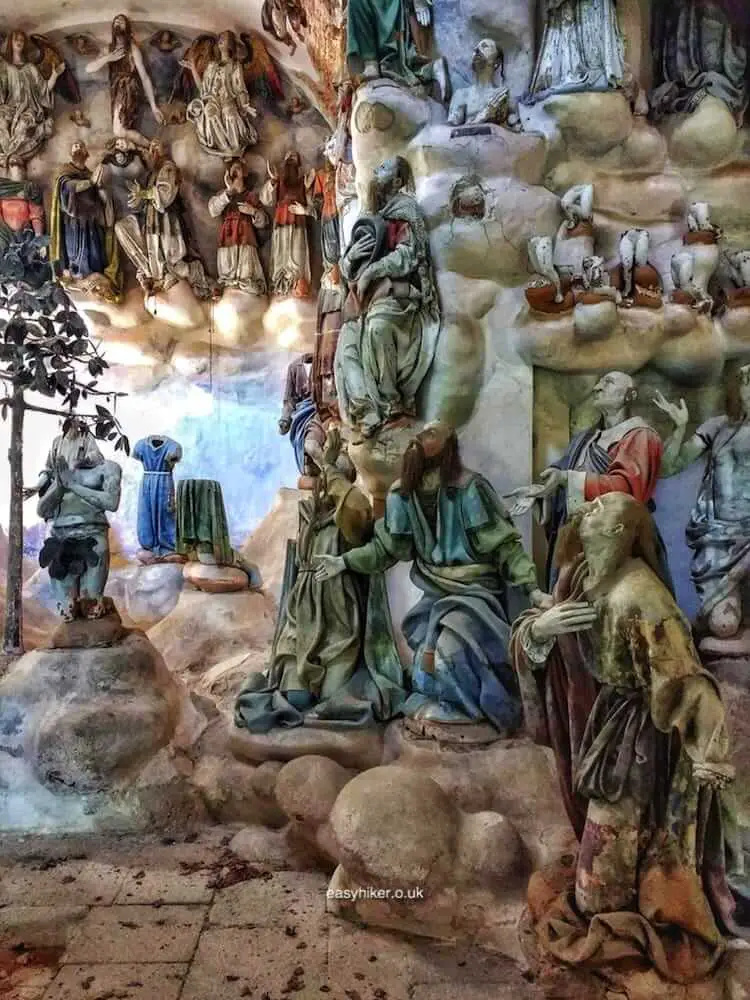
On second thought: it is probably better to leave this crowning apex of a scene with its cast of 150 (roughly as many statues as in all the others Oropa chapels together) where it is, so it can delight visitors who do not give up easily, who can count to twelve and who have always wished to play Indiana Jones.
You have to leave that to Oropa: this is certainly something you would not be able to experience on any other of the nine Sacred Mountains.
Tip on how to get to the sacred mountain of Oropa: The nearest town to Oropa which has good national transport connections is Biella (trains from Turin take less than one hour). From Biella train station (Biella San Paolo) take bus no. 360, with departures throughout the day. A full bus schedule can be found here.

